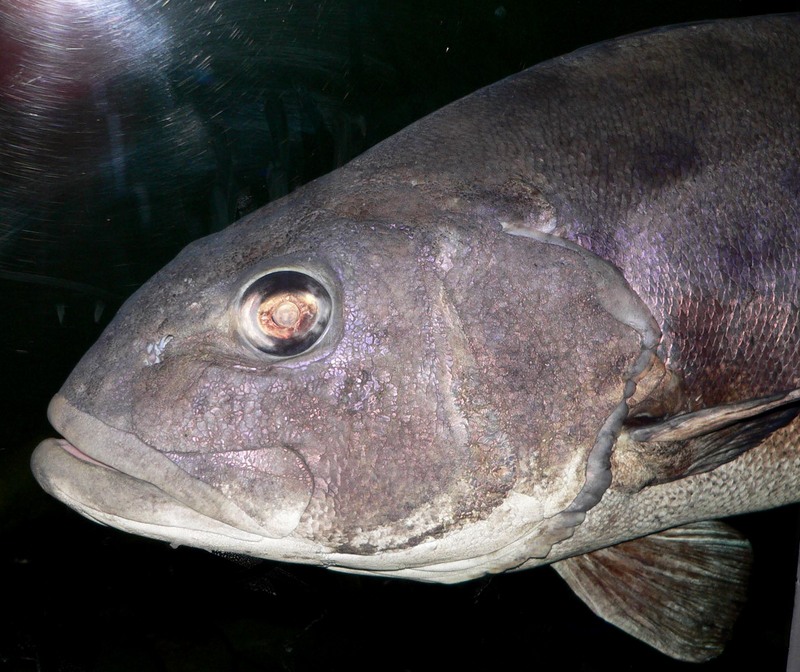Giant sea bass
From Wikipedia, the free encyclopedia
[Photo] Giant Sea Bass, Stereolepis gigas.Photo of Stereolepis gigas (giant sea bass) head at the Steinhart Aquarium in San Francisco, taken June 2005 by Stan Shebs (http://commons.wikimedia.org/wiki/User:Stan_Shebs) | Permission is granted to copy, distribute and/or modify this document under the terms of the GNU Free Documentation License, Version 1.2 or any later version published by the Free Software Foundation; with no Invariant Sections, no Front-Cover Texts, and no Back-Cover Texts. A copy of the license is included in the section entitled "GNU Free Documentation License". |
The giant sea bass (Stereolepis gigas), also known as the black sea bass, is a fish native to the northern Pacific Ocean. With its conspicuous size and a curious nature, it is surprising that relatively little is known about its behavior and biology.
There are published reports of giant sea bass reaching a size of 2.5 m (8.2 feet) and a weight of up to 255 kg (562 lbs). However in Charles F. Holder's book The Channels Islands published in 1910, the author claims specimens taken from the Gulf of California attained 800 pounds (360 kg)! In the eastern Pacific its range is from Humboldt Bay, California to the Gulf of California, Mexico, most common from Point Conception southward. In the western Pacific it is found in the sea around Japan. It usually stays in relatively shallow water, near kelp forests, drop offs or rocky bottoms.
Giant sea bass were once a relatively common inhabitant of Southern California waters, yet in the 1980s it was facing the threat of local extinction off the California coast. Beginning in the late 1800s, the species supported both a commercial fishery taking hundreds of thousands of kg annually, and a sport fishery that also landed hundreds of fish each year. Spear fishermen also exploited the giant sea bass, first as free divers, and then after the mid 1950s using scuba gear. Often the divers would target the species when they moved into shallow water during the summer months to spawn. By the late 1970s, biologists with the California State Department of Fish and Game, recognized that the local population of giant sea bass was in serious trouble. Actions were taken, resulting in protection from commercial and sport fishing that went into effect in 1982. Yet for almost two decades encounters with giant sea bass were scarce. The giant sea bass reproduces slowly with a population doubling time of more than 14 years and is still listed as critically endangered.
http://en.wikipedia.org/wiki/Giant_sea_bass
| The text in this page is based on the copyrighted Wikipedia article shown in above URL. It is used under the GNU Free Documentation License. You may redistribute it, verbatim or modified, providing that you comply with the terms of the GFDL. |
|

